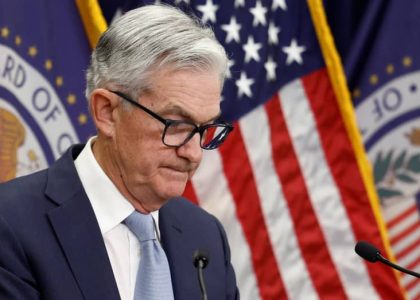There's been no shortage of talk surrounding the interest rate complex. I believe the recent Federal Reserve Board's meeting was the most highly anticipated since the economic collapse. Their decision to leave rates unchanged sent everyone back to their drawing boards. I've read tons analysis since then by people who really know the inner workings of the Fed, the economy and the interest rate markets. The general consensus among these people is as clear as mud. When the brightest of minds come down on opposite sides of an argument it leaves us mere mortals incapacitated in a head shaking way. Since we can't count on the experts, we'll go straight to the source, the markets themselves.
 One of the lessons my father passed on to me 20-something years ago was, "When the markets disagree, always revert to price." My father's point was that no one can ever really know all of the variables impacting a given market, let alone how to weight and interpret them. Therefore, the last traded price in any given market represents fair value. We trade the Eurodollar, 5-year Treasury Note, 10-year Treasury Note and 30-year Treasury Bonds. We've begun to notice a change in the patterns and relationships between these markets which we'll develop later on the week. For today's piece, we'll look at the 30-year Treasury Bond along with the basic shape and concept of things to come.
One of the lessons my father passed on to me 20-something years ago was, "When the markets disagree, always revert to price." My father's point was that no one can ever really know all of the variables impacting a given market, let alone how to weight and interpret them. Therefore, the last traded price in any given market represents fair value. We trade the Eurodollar, 5-year Treasury Note, 10-year Treasury Note and 30-year Treasury Bonds. We've begun to notice a change in the patterns and relationships between these markets which we'll develop later on the week. For today's piece, we'll look at the 30-year Treasury Bond along with the basic shape and concept of things to come.
The 30-year Treasury Bond is by far the most volatile interest rate product we trade. The margin for this contract is a little more than $3,700 and the recent average daily movement is approximately, $1,900. Thus, timing this trade can be critical. Looking at the current situation, we find a market at odds with itself. Commercial traders have been sellers for four straight weeks and nine out of the last eleven. This has placed them squarely in the bear camp as their actions anticipate higher interest rates into the future. Recent market movement, however, has not agreed with them as we were around 153 when their selling began and are currently trading north of 157.

There are two technical plays currently at work in the 30-year Bonds and they both point towards higher prices which equals lower yields. The short-term pattern has built up over the last month or, so and appears as an inverted head and shoulders pattern. Technically, this should push us higher. Interestingly, this does not measure out to new highs. The second play is the larger bottom that goes back to the March lows. This pattern is also an inverted head and shoulders pattern, although on a much larger scale. The large pattern is bound by the neckline that started at the January highs.
I'm a swing trader. I look for markets that are possibly over extended either higher or, lower and attempt to catch the move back towards their value area. This is mean reversion trading. I use the commercial traders' position as a proxy for fundamental value. Finally, we measure the tension between the commercial traders' estimation of value as compared to the current market prices as driven by small speculators. Our research has shown that these conflicts tend to resolve themselves in favor of the commercial traders.
All things being said, the 30-year Treasury Bonds are currently setting up for a short sale opportunity. The combination of long and short-term support are currently reinforcing each other. Given the decidedly negative commercial trader position, we view this rally as a selling opportunity ahead of the October Federal Reserve Board's meeting. One final note to add to the confusion, I don't believe the Fed has ever raised rates at the October meeting.





